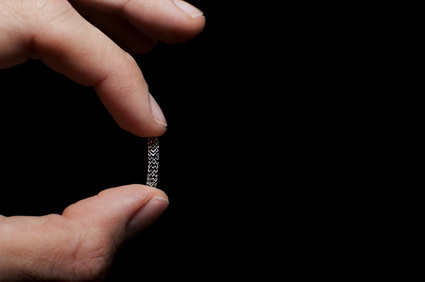The percutaneous treatment of carotid artery disease through stenting (CAS) for the prevention of cerebrovascular disease has proven to be an effective alternative compared to carotid endarterectomy (CEA) surgery. Various studies have shown no significant differences between both strategies (CAS vs. CEA) in terms of mortality, stroke, or acute myocardial infarction (AMI) within 30 days. However, the incidence of minor stroke remains higher in patients who underwent CAS, despite the use of embolic protection filters.

The NeuroGuard IEP3 carotid stent is a system based on a 6-Fr catheter, composed of a nitinol stent mounted on a semi-compliant balloon and a distal protection filter. The PERFORMANCE I study assessed the use of this system in 67 patients with successful implementation without cerebrovascular events during follow-up.
The objective of the PERFORMANCE II trial, a prospective and multicenter study, was to assess the safety and efficacy of the NeuroGuard IEP3 system in the treatment of severe carotid artery stenosis in a population of patients at high risk of complications after CEA.
Read also: Acute Coronary Syndrome with Multivessel Disease: Best Revascularization Strategy.
The primary endpoint (PE) was the rate of major adverse events (MAE), defined as death, stroke, and AMI within 30 days after the procedure. The secondary endpoint (SE) included procedural success, minor stroke, major stroke, neurological death, and clinically driven target lesion revascularization (TLR).
Results
The trial included a total of 305 patients, with a mean age of 69 years. Most of the subjects were men. Only 20% of patients were considered symptomatic. The mean lesion length was 19 mm, and 34% of the lesions showed severe calcification.
Regarding the PE, at 30 days, four cases of minor stroke (1.3%) were reported, with no records of major stroke. The combined stroke/mortality rate was 1.6%, while the stroke/mortality/AMI rate was 2.3%. At 12 months, the PE had occurred in only 2.8% of patients, with no instances of major stroke, TLR, stent thrombosis, or neurological death.
Conclusion
This study showed a low rate of major adverse events compared to historical evidence, confirming that the NeuroGuard IEP system is a safe, effective, and durable option for the percutaneous treatment of carotid artery disease in patients at high risk of complications from CEA. The 12-month stroke rate of 1.8% is the lowest reported to date for any carotid artery revascularization strategy.
Original Title: The PERFORMANCE II Trial A Prospective Multicenter Investigation of a Novel Carotid Stent System.
Reference: William A. Gray, MD et al JACC Cardiovasc Interv. 2025.
Subscribe to our weekly newsletter
Get the latest scientific articles on interventional cardiology





